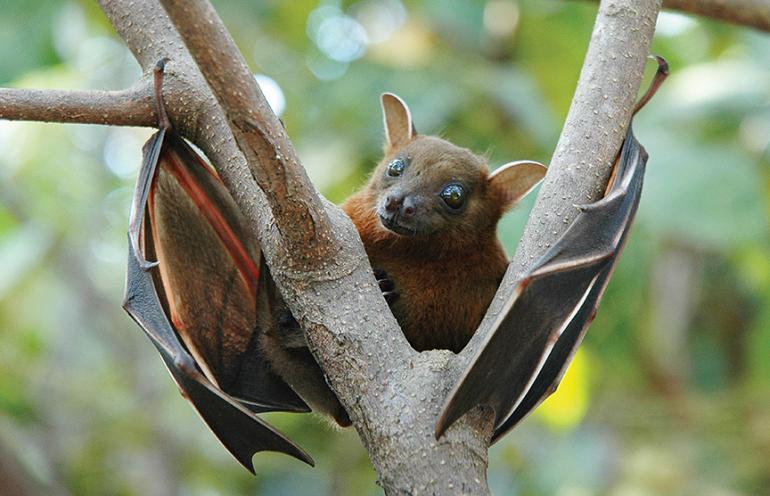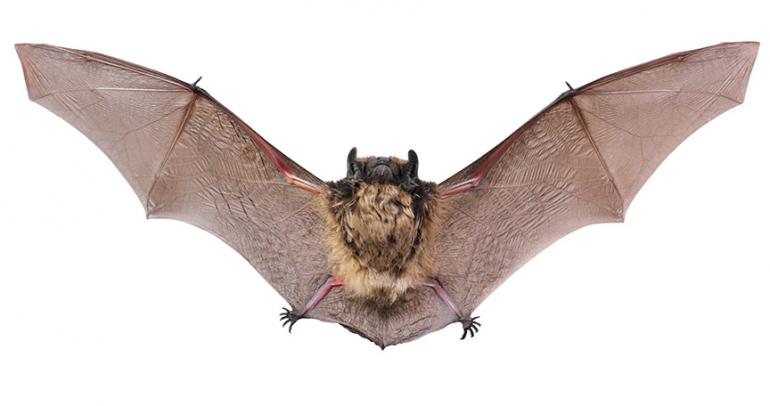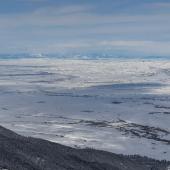Gettin' Batty
All about Montana's flying mammal.
In addition to deer, elk, and other big game which make the Treasure State so special, Montana is home to hundreds of nongame species of wildlife. And Montana Fish, Wildlife & Parks (FWP) is mandated to manage them all, including one of our most misunderstood mammals: bats.
Bats are unique creatures needing a little help these days. Let’s just say their portrayal in old horror movies, along with the stigma of being disease-ridden, hasn’t done these little guys any favors. And now, some bats nationwide are facing real danger to their survival. So let’s delve into a few things that you should know about bats.
Bats Are Fascinating
First of all, bats are not flying mice—they’re not rodents at all. They belong to the cool-sounding order Chiroptera and they’re the only mammals who can really fly (other so-called “flying” mammals are actually gliding). Another exceptional trait of bats is the system of ultrasonic sounds (echolocation) they use to navigate and interpret their surroundings in the dark.
Bats live an exceptionally long time in the wild (the little brown bat, for example, can live up to 30 years). Meanwhile, their rate of reproduction is low, only having one pup a year. And where they make their homes (roosts) is super important to their survival.
Don’t like mosquitoes? Bats do. They eat lots of them, along with other nighttime pests. That’s what makes bats a real money-saver for agriculture, reducing the need for pesticides.
Bats’ Biggest Threat
Along with threats to habitat, white-nose syndrome (WNS) poses a big threat to the existence of some bats, already killing more than six million in the eastern U.S. WNS is a fungus that is spread mostly between bats, but also can be spread by other animals, or on the clothing and gear of humans. The disease, which is not known to pose threats to humans or pets, has appeared in more than half of U.S. states (all in the eastern half of the country, except for recently being documented in Washington).
Protective Measures
Although there is no treatment for WNS, FWP is working with partners to get ahead of WNS in Montana. Those partners include cavers in the Northern Rocky Mountain Grotto who are helping monitor hibernating bats and educating their fellow cavers about disinfecting their gear between caves.
We’re also getting information from about 50 bat-detecting devices deployed around the state, which use our bats’ echolocation to learn about bat activity (not sure if Gotham had one of these).
As Unwanted Guests
Still not comfortable with bats in your belfry? We get it. But please plan ahead and get help if you need to move a bat colony. Understand that most colonies are made up of females and pups. These bats typically make their roosts in the warmest (and by that we mean continually warm) places they can find, like your attic or barn. After breeding season ends or before it starts, block the bats out of the building in question. Give the bats alternative roost sites like properly designed bat houses.
Suitable Housing
What makes a good bat house in Montana? Bats choose roosting sites based on temperature. They want warm places that stay warm at night. In Montana, bat houses need to be painted black and placed in the sun. You don’t want to put them on trees (too easy for predators). Poles are best, or on the sides of outbuildings. The houses also need to be large enough. Think about it this way: trying to get a bat to move out of your attic and into a small bat house is like asking a bat to move from a mansion to a camper—so make it a nice camper.
Andrea Jones is the FWP Region 3 information and education program manager.












